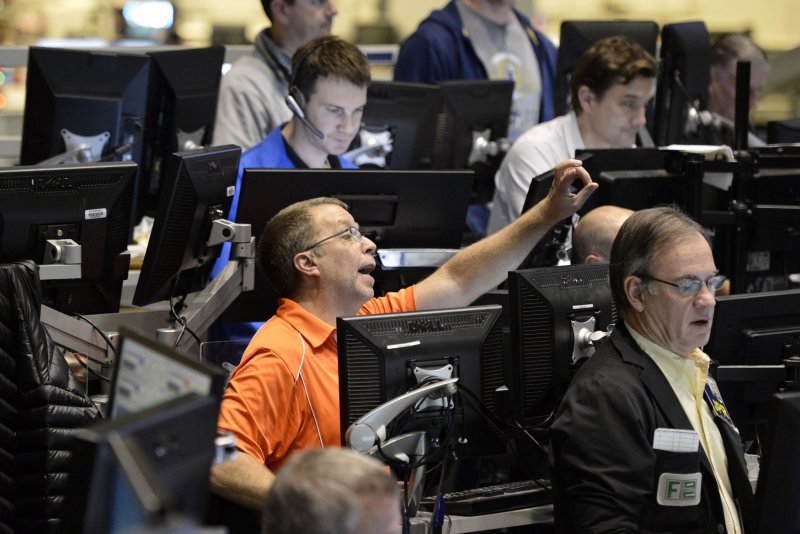Crude oil prices were on the rise early Friday and looked set not only to end the day with gains but also for West Texas Intermediate to lock in one of its best quarters in a decade. Photo by Brian Kersey/UPI |
License Photo
March 29 (UPI) -- Crude oil prices were on the rise early Friday, not only on their way to close higher for the day but also to lock in what an analyst described as the best quarter for West Texas Intermediate in a decade.
WTI crude oil prices rose 1.3 percent to $60.08 as of 7:40 a.m. EST, with Brent crude oil gaining 1 percent to $67.79 per barrel.
WTI has seen a very volatile week, with a decline on Monday, followed by a rise on Tuesday, and then a decline on Wednesday. It was nearly flat on Thursday, closing slightly lower to $59.30 per barrel. WTI reached a high for the year of $60.23 per barrel on Mar 20.
Brent crude oil was less volatile with a small gain on Monday, a spike on Tuesday and later declines on Wednesday and Thursday, when it closed at $67.10 per barrel.
WTI crude oil is "headed for its best quarter in a decade," Ole Hansen, head of commodity strategy at Saxo Bank, told UPI.
Brent closed on December 23, 2018 at $53.21 per barrel, while WTI closed on the same day at $45.33 per barrel.
"Aggressive cuts by OPEC and Russia since being wrongfooted by (U.S. President Donald) Trump's waivers last November will not be reversed by a tweet," he added.
OPEC and Russia agreed in December to cut production by 1.2 million barrels of crude oil per day, following plunges in oil prices from highs in 2018 of over $86 for Brent, and over $76 for WTI.
The plunges occurred in part after the United States initially announced sanctions against Iran in May, prompting producing nations like Saudi Arabia to increase production to cover the gap, and then suddenly and unexpectedly announcing waivers in early November as the nuclear-related sanctions were going to be implemented. This created a perception of excess supplies.
"With supply being cut the biggest risk to oil is renewed worries about global growth and demand. A focus however that will be kept down as long as global stocks continue to rally as they did overnight on renewed trade deal hopes," Hansen added.
Separately, Jeff Yastine, a senior research analyst at Banyan Hill Publishing, said he sees "further increases in store for crude oil." He mentioned uncertainty related to future Venezuelan output as another factor that has been contributing to the recent increases and may worsen.
"The new economic data showing an unexpectedly sharp drop in the U.S. trade deficit may also be helping as well, as oil traders anticipate a sooner-than-expected end to the US-China trade impasse," he added.
"It may indicate that Chinese negotiators may accede to the Trump administration's demands in a way that's more satisfactory to the administration," he added.















